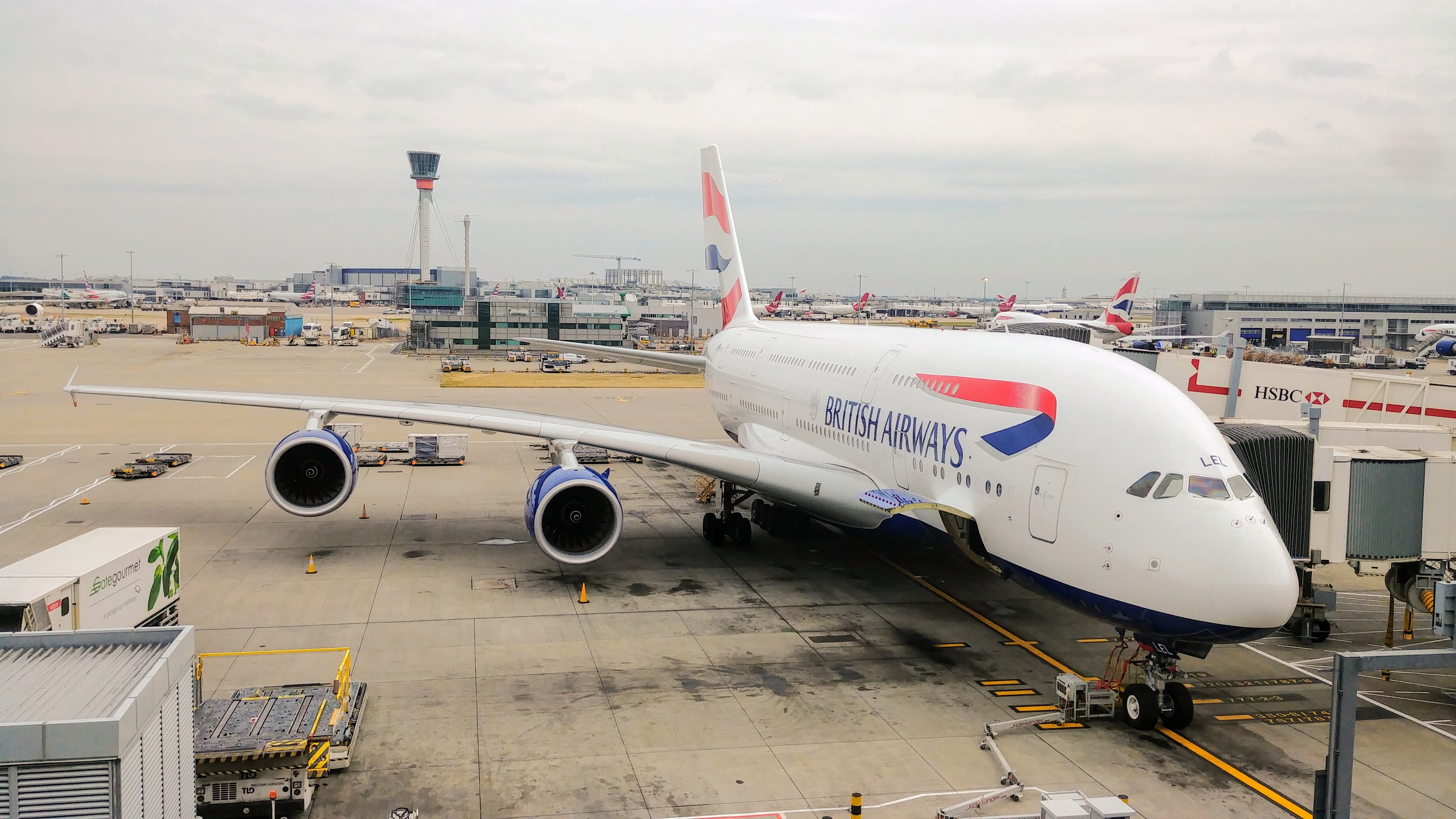Yesterday, a combination of moisture and cold caused snow to fall in a singularly odd pattern near Chicago:
Although no widespread weather systems were in the area to crank out snow, flurries were still falling across parts of the area.
These unusual phenomena were thanks to a supercooled atmosphere interacting with exhaust from a power plant and also the air flow around commercial aircraft.
Farther to the north, a bizarre radar signature in the shape of a loop showed up just northeast of the Windy City, out over Lake Michigan. It turns out this dash of winter was caused by aircraft landing at O'Hare International Airport.
Observations from the airport at the time reveal a temperature of 22 degrees and a dew point of 17 degrees, both well below freezing. Additionally, the closeness of the temperature to the dew point meant the air was near saturation. There was 82 percent relative humidity at the time.
It's likely that supercooled water droplets were present in this air mass. That means the water vapor was below freezing but couldn't entirely transition into ice crystals because of a lack of particulates upon which to freeze.
In this case, though, an aircraft - or many aircraft - passed through this layer.
Meanwhile, police and firefighters closed streets around tall buildings in downtown Chicago yesterday as chunks of ice came crashing down on them. (On the streets, not the firefighters.) You can imagine the commute.
When I'm explaining software designs, I'll often say things like, "I don't care if the data comes from SQL, NOSQL, or a squirrel..." It turns out, Frontier Airlines cares very much:
A passenger was removed from a Frontier Airlines flight late Tuesday when she attempted to fly with her “emotional support” squirrel and then refused to get off the plane when she was told no, according to the airline.
A Frontier spokesman said in a statement that the passenger had alerted the airline that she would be bringing an emotional-support animal on the flight but did not mention it would be so . . . bright-eyed and bushy-tailed.
“Rodents, including squirrels, are not allowed on Frontier flights,” the statement read. “The passenger was advised of the policy and asked to deplane.”
I wonder if the person escorting the passenger off the plane was named Boris or Natasha. Or if they'll allow an emotional-support moose. And I probably never will.
Some questions:
And finally, when can I take a nap?
I didn't have a moment to write any code from 9am until now, so my lunch will include doing the stuff I didn't do in all those meetings. At some point I'll get to these:
Now, back to writing code, as soon as I make yet another vet appointment for my bête noir.
On Thursday, Singapore Airlines reinstated its nonstop flight from Newark, N.J., to Singapore—an 18-hour, 45-minute marathon that covers 16,734 km:
What accounts for this sudden ultra-long-haul boom? Partly, it is technological advances. The Singapore-Newark flights will use new Airbus A350-900 ULR (ultra-long-range) planes, which are made of lightweight carbon-fibre materials, have extra fuel capacity, and conserve fuel by using only two engines rather than the typical four on long-haul jumbo jets. Singapore will also make these marathon flights more bearable with a few comfort upgrades. There will be no economy seats—just premium economy and business class—and only a total 161 seats compared to 253 on the carrier’s current A350-900s. The airline also claims an upgraded food menu and a range of entertainment options will help whittle away the many hours on board.
Here's FlightAware's map of that first flight, and GC Map's.
Remarkably, you can get a business class ticket on the flight for only $5,300, according to Hipmunk. (That's remarkable because a business class ticket to London for the same dates would be $8300 on American or $7650 on British.)
Who wants to go with me?
The Economist's Gulliver blog this morning asked exactly the same question I did when I woke up: how likely is it to get ill from flying on an airplane? Not very:
Planes are widely regarded as flying disease-incubators. If one passenger is sick with a contagious disease and coughing those germs into the air, it makes sense for fellow-flyers to feel that the germs will simply be inhaled by everyone else on the flight, since there is nowhere else for the things to go.
In reality, though, the situation is not that bad. Allen Parmet, a former US Air Force flight surgeon who serves as an aerospace medicine consultant, explained recently to The Verge, a technology and science news site, that infections actually don’t spread well on planes. The reason is the very dry air in the cabin. Many bacteria die in the low humidity. As for viruses, they travel on water droplets when a person coughs or sneezes. But these water droplets also evaporate in the low humidity, and the plane’s fast airflow from ceiling to floor prevents them from travelling far.
[M]ost viruses take days to show symptoms, and there were indications that the illness was contracted by people before they boarded the plane. This tale will probably end the usual way. A few passengers, by the laws of probability, will get sick in the coming week, and they will assume it had something to do with all the germs floating around the plane. It may not be true, but it is for them a satisfying enough explanation.
Well, sure, but I swear the dozen or so babies and toddlers running around (literally) my cabin earlier this week may have contributed to how I felt today.
This coffee shop, on Bermondsey Street:

And this airplane:

Actually, the A380 was pretty cool inside, though I may have erred getting an upper-deck seat. Next trip to London, I'll go for a lower-deck seat if I can. (Or even business class...hmmm...)
Most people starting college this year were born in 2000. Let that sink in. Then read this:
- They are the first class born in the new millennium, escaping the dreaded label of “Millennial,” though their new designation—iGen, GenZ, etc. — has not yet been agreed upon by them.
- Outer space has never been without human habitation.
- They have always been able to refer to Wikipedia.
- They have grown up afraid that a shooting could happen at their school, too.
- People loudly conversing with themselves in public are no longer thought to be talking to imaginary friends.
It gets worse from there. (Worse, I suppose, if you realize that these kids are 30 years younger than you are.)
I'm traveling today, so this may be my last post of the Summer of 2018. Posting resumes from the Ancestral Homeland tomorrow.
Friday evening, a baggage worker at SEATAC airport outside Seattle stole an empty commuter plane and crashed it into an uninhabited part of an island in Puget Sound. Pilot and journalist Jim Fallows has an analysis:
Bizarre, frightening, and tragic this certainly was. Was it a sign of an alarming failure in security practices, and some press accounts immediately asserted? (For instance, from the UK’s Telegraph, soon after the event: “It has raised fundamental questions about airline security at America’s major airports after the mechanic was able to board the plane, taxi onto the runway and take off without being stopped. Aviation experts questioned what the authorities would have been able to do if the pilot was determined to fly the plane into a city rather than do loop-the-loops.”
Maybe this will be the appropriate response when more facts are known. For the moment, as is usually the case with aviation disasters, many of the most important questions about what happened are impossible to answer right away.
I hope that, when the facts are in, the response to this odd, sad incident will resemble what the aviation system usually does with its failures, rather than the way the political system often behaves. That is, I hope it serves as a source of guidance for further threat reduction, rather than as fuel for panic and finger-pointing about the modern realities that some “What if?” will always remain.
What a strange story.
Bruce Schneier says that the TSA's thoughts about security at smaller airports are exactly the conversation they should be having:
Last week, CNN reported that the Transportation Security Administration is considering eliminating security at U.S. airports that fly only smaller planes -- 60 seats or fewer. Passengers connecting to larger planes would clear security at their destinations.
To be clear, the TSA has put forth no concrete proposal. The internal agency working group's report obtained by CNN contains no recommendations. It's nothing more than 20 people examining the potential security risks of the policy change. It's not even new: The TSA considered this back in 2011, and the agency reviews its security policies every year.
We don't know enough to conclude whether this is a good idea, but it shouldn't be dismissed out of hand. We need to evaluate airport security based on concrete costs and benefits, and not continue to implement security theater based on fear. And we should applaud the agency's willingness to explore changes in the screening process.
There is already a tiered system for airport security, varying for both airports and passengers. Many people are enrolled in TSA PreCheck, allowing them to go through checkpoints faster and with less screening. Smaller airports don't have modern screening equipment like full-body scanners or CT baggage screeners, making it impossible for them to detect some plastic explosives. Any would-be terrorist is already able to pick and choose his flight conditions to suit his plot.
And just think, it's only taken 15 years and $45 billion to get here...